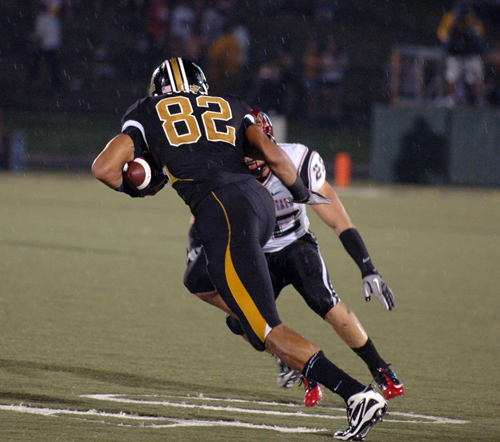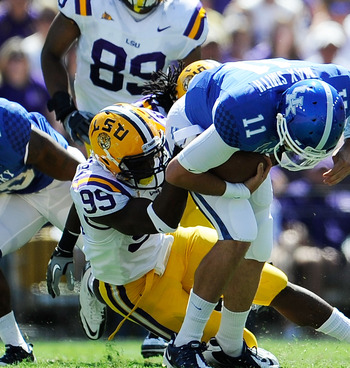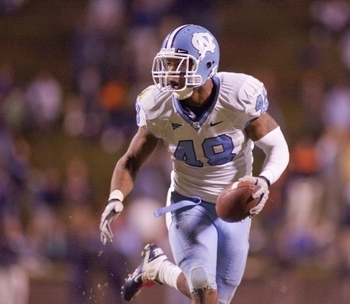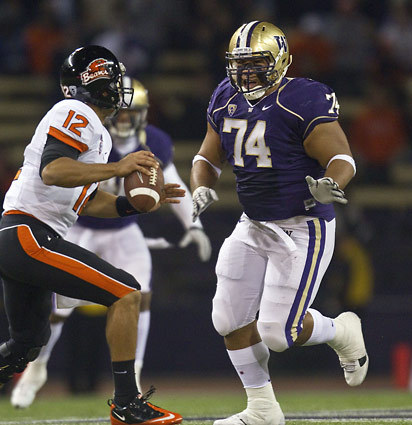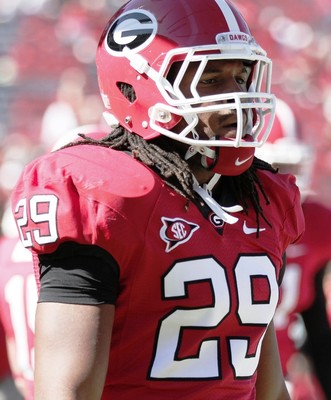Regulars will know the score by now. The idea of these weekly mocks is not to make a firm prediction as to what will happen on April 26th, rather it’s an opportunity to look at possibilities and talk about several different options. A lot of people are going to scratch their head at this week’s pick for Seattle, but I’ll try to explain.
Firstly, I suspect the Seahawks will draft for defense in round one. It appears the only situation I can see where they deviate from this plan is if someone makes a surprising fall or having studied Brock Osweiler since his shock decision to declare, they believe he’s worthy of a top-15 grade. If neither of those situations materialise, then even with a mediocre defensive class I think that’s the direction they’ll go. Pete Carroll has been fairly open about where he needs improvement and the way he highlighted greater speed among the front seven, I think that was a big hint as to what the Seahawks might do in round one.
He also mentioned other areas, such as wanting greater depth at cornerback and a ‘touchdown maker’ on offense if one was available. Even so, adding to the front seven makes a lot of sense given the team’s glaring lack of pass rush during the last two years and the seemingly total reliance on Chris Clemons to create pressure. They need more edge speed at linebacker and players that can cause greater issues on the blitz. They need a dynamic three-technique among the interior. They need at least one more complimentary edge rusher to replace Raheem Brock on third downs and obvious passing situations.
When compiling this latest mock, I considered a number of prospects – some more obvious than others. Dre Kirkpatrick (CB, Alabama) has the kind of size this front office has looked for at corner and he grades very highly in run support. However, his technique in press coverage is poor and I’ll never forget the way he was abused by Ryan Mallett (understandable) and John Brantley (more concerning) where his weaknesses as a cover corner were exploited. He’s too stiff, he often plays the man rather than the ball and generally I think he’s pretty overrated.
I understand why people want to avoid the cornerback position this early, because the Seahawks uncovered two new starters this year in Brandon Browner and Richard Sherman. It’s worth noting, however, the injuries Seattle sustained at the position last year and the likely departure of Marcus Trufant. Browner will be 28-years-old when the 2012 season begins and we saw with Mike Williams how a player can regress slightly after appearing from nowhere. Let’s not forget that according to PFP, Browner gave up the 7th most passing yards in the NFL. Carroll wants competition and the attitude among the secondary is having a huge impact on the defense. Adding another young prospect who can further add to the team’s identity might be high on the agenda, especially if they value Kirkpatrick as high as a lot of other people do.
I also looked at Devon Still (DT, Penn State), Zach Brown (LB, North Carolina), Whitney Mercilus (DE, Illinois) and Melvin Ingram (DE, South Carolina). Still showed flashes of excellence last year, but I’m not convinced he’s a consistent interior penetrater who can provide the missing piece at three-technique. It may be that he’s valued more by teams looking to move him to the five-tech, although I paired him with Philadelphia (a 4-3 team) in this mock. Brown is definitely an option for the Seahawks, offering pure athleticism at linebacker and an ability to move from sideline-to-sideline making plays. Mercilus remains a bit of a mystery having had the chance to study his UCLA tape this week and I don’t expect the team to draft a LEO specialist in round one this year. Ingram causes a lot of heated debate on this blog, I stil maintain that finding a home for him in this scheme is a dilemma I cannot solve.
So this brought me to a new direction, a player I’ve always been fond of but didn’t expect to get first round consideration due to a lack of size. A significant lack of size.
Sean Spence is 5-11 and 228lbs according to the Senior Bowl numbers posted by Tony Pauline. In truth, he probably played most of his career at Miami closer to 220lbs. He’s basically a strong safety playing at linebacker, but it’s what Spence achieved in spite of his size that intrigues me for Seattle – even in round one. The Seahawks are looking for speed at linebacker, but not the kind of speed that Aaron Curry brings to the table. They want a guy who’s capable of blitzing sharply into the backfield and making a splash play, but they also want someone with the recognition skills, coverage ability and discipline to be more than a reckless heat-seeking missile who makes costly decisions.
There are obvious limitations due to the lack of size and although Spence is generally a sharp tackler in the open field, he’s also had a few missed opportunities because he has such a modest frame. If he was asked to play the SAM I think he’d struggle taking on bigger tight ends in coverage, but the WILL places most emphasis on speed and being able to react to different situations. The way the Seahawks stack up their front line with size (Bryant, Mebane and Branch) may afford for a slightly smaller yet faster linebacker. A further way to compensate could be to build up the size at the MIKE, potentially by signing someone in the mould of Dont’a Hightower to provide that real menacing brutality and run support. He does get engulfed sometimes by bigger lineman, but his speed will be a big factor when blitzing and he’s tougher than the 5-11 frame suggests. He’s one of the best coverage linebackers I’ve scouted.
Russ Lande at the Sporting News gave me the confidence to make this projection when he made Spence a first round pick in his latest mock. He also named him, “The best linebacker to come out of Miami since Ray Lewis.” Here are some of the post-Lewis linebackers to leave Miami and join the NFL: Dan Morgan, Jonathan Vilma, DJ Williams, Rocky McIntosh, Jon Beason and Tavares Gooden. Indeed Vilma has comparable size (two inches taller, but the same weight) and ran a 4.54 at the combine. Spence should top that. I asked Lande for further information given the high praise and he told me he believed Spence was an “elite” linebacker prospect with the ability to play the WILL or even the MIKE in the 4-3.
There’s absolutely no doubt that this would be an unorthodox pick and one that would probably come with widespread criticism from the rest of the league. Yet Seattle’s front office has been anything but conventional so far and to a large extent it’s worked. If they were just looking for big, fast players – Aaron Curry would still be on the roster. Very few people expected James Carpenter to be a first round pick, while the likes of Kris Durham and KJ Wright where considered suprising selections at the time. They’re looking for difference makers, impact players, guys who will buy into the system and lead by example. Quite aside from Spence’s athletic qualities, he’s also been the heartbeat of Miami’s defense for a few years. Reports say he’s a coaches dream off the field – dedicated to his craft, a film room junkie and a student of the game.
As with last week’s projection, there could be an opportunity here to move down the board and add some other picks before making a choice like this. I don’t deal with trades, but it’s worth baring that in mind before you send that venomous email and ask why Quinton ‘I’ll take the next play off’ Coples isn’t the pick instead. If the Seahawks really are looking for speed in the front seven this is a player to keep in mind and don’t underestimate how high he could be taken. At the top of this article, you will find 2010 tape of Spence’s performance vs Clemson. Onto this week’s mock…
Updated first round mock draft
 |
#1 Andrew Luck (QB, Stanford) The Colts are cleaning house to make room for the Andrew Luck era. They might as well start talking about a contract now. |
 |
#2 Matt Kalil (OT, USC) The Rams have to take Kalil, he’s too good to pass up. There’s enough depth at receiver to wait until round two. |
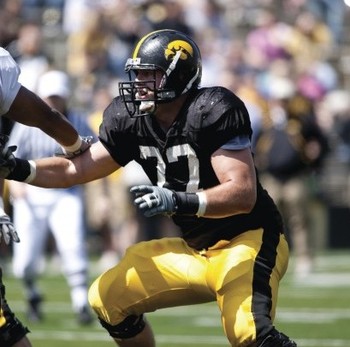 |
#3 Riley Reiff (OT, Iowa) Minnesota need to protect their investment in Christian Ponder. They’d love to have Kalil, but Reiff is a decent compromise. |
 |
#4 Robert Griffin III (QB, Baylor) I’m still not completely convinced by this, but Cleveland does need a dynamic playmaker on offense. |
 |
#5 Trent Richardson (RB, Alabama) Sure, they have big needs at linebacker and corner. However, Richardson is an elite prospect who will transform an offense. |
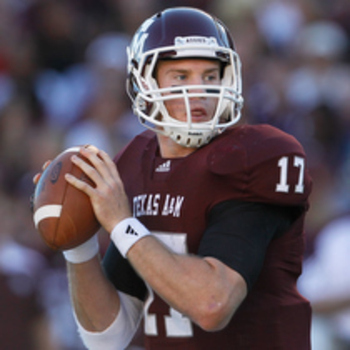 |
#6 Ryan Tannehill (QB, Texas A&M) This would be a foolish reach but Shanahan wants his guy. If Tannehill really is going to go in the top-15 as speculated, Washington is the obvious choice. |
 |
#7 Morris Claiborne (CB, LSU) Corner’s traditionally don’t go in the top-five and Patrick Peterson was the exception last year. Claiborne would be a nice get for the Jags. |
 |
#8 Courtney Upshaw (OLB, Alabama) Miami needs an outside linebacker and Upshaw is doing enough at the Senior Bowl to warrant this kind of projection. |
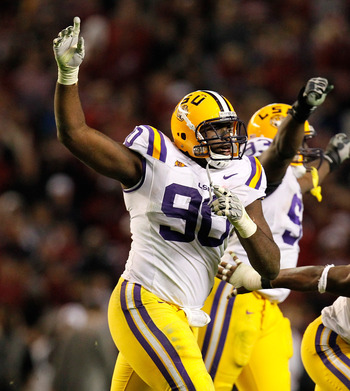 |
#9 Michael Brockers (DT, LSU) A complete lack of defensive line talent could push a raw youngster like Brockers into this range. |
 |
#10 Jonathan Martin (OT, Stanford) The Bills need to boost both lines and could consider Justin Blackmon too. However, taking Martin would be a smart move. |
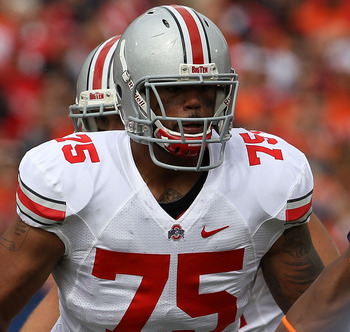 |
#11 Mike Adams (OT, Ohio State) I’m not a huge fan based on the tape, but he’s doing as much as anyone to promote his stock in Mobile. |
 |
#12 Sean Spence (OLB, Miami) A titanic reach? Or just what the Seahawks are looking for? More speed in the front seven is the aim and Spence could be the ideal WILL. |
 |
#13 Brock Osweiler (QB, Arizona State) Someone is going to fall in love with this guy’s skill set. Arizona should dump Kevin Kolb and draft Osweiler. |
 |
#14 Janoris Jenkins (CB, North Alabama) Elite coverage skills, the concern comes with the off-field issues. He needs to prove to team’s he’s matured in the last 12 months. |
| #15 Devon Still (DT, Penn State) The Eagles need a linebacker, but Andy Reid hates spending early picks on the position. Still could be an option here. |
|
 |
#16 Justin Blackmon (WR, Oklahoma State) Incredible production in college but has much changed in 12 months when he would’ve likely been a mid-to-late first rounder? |
 |
#17 David DeCastro (OG, Stanford) Slightly over rated, a technician who looks great on the move but lacks elite power at the point of attack. |
 |
#18 Dwight Jones (WR, North Carolina) The best receiver in this class as far as I’m concerned. He could end up being the complete package and a sound replacement for Vincent Jackson. |
 |
#19 Kendall Wright (WR, Baylor) Electric receiver who would quickly become Jay Cutler’s BFF. Capable of having a big impact quickly. |
 |
#20 Whitney Mercilus (DE, Illinois) They need to improve their edge rush and Mercilus led the nation in 2011 for sacks. A hard player to work out. |
 |
#21 Dre Kirkpatrick (CB, Alabama) Over rated corner who’s great in run support but struggles with press coverage. Not as good as advertised. |
 |
#22 Michael Floyd (WR, Notre Dame) Cleveland needs to keep adding playmakers. Floyd has his issues, but put him on that offense with RGIII and it’ll be much improved. |
 |
#23 Zach Brown (LB, North Carolina) Athletic linebacker who moves well and could go higher than this. As with all the UNC seniors, his play dropped off towards the end the year. |
 |
#24 Mark Barron (S, Alabama) His 2011 performance warrants a higher pick, but positional value could lead to a slight fall. |
 |
#25 Luke Kuelchy (LB, Boston College) He’s under sized but what a tackler – he’ll get close to 100 tackles in year one. Has several limitations. |
 |
#26 Andre Branch (DE, Clemson) The Texans might struggle to re-sign Mario Williams, so could look elsewhere for further additions to their growing defense. |
 |
#27 Peter Konz (C, Wisconsin) Top end interior lineman who could be the best in this class. Stuck out on a talented Badgers line and no surprise he turned pro. |
 |
#28 Melvin Ingram (OLB, South Carolina) He’s a tweaner who best suits playing off the edge in the 3-4. This would be a good fit. |
 |
#29 Mohamed Sanu (WR, Rutgers) Sanu can line up anywhere and make plays. San Francisco use a lot of gimmicks and need a sure-handed catcher. |
 |
#30 Quinton Coples (DE, North Carolina) In recent years Baltimore have capitalised on players falling into this range to get value. Coples could drop into the late first. |
 |
#31 Dont’a Hightower (LB, Alabama) Big, brutal linebacker who eats up run plays. Would be a great addition to New York’s defense. |
 |
#32 Fletcher Cox (DT, Mississippi State) He plays like a runaway train – unbalanced, a bit out of control, yet with plenty of power and speed. |






